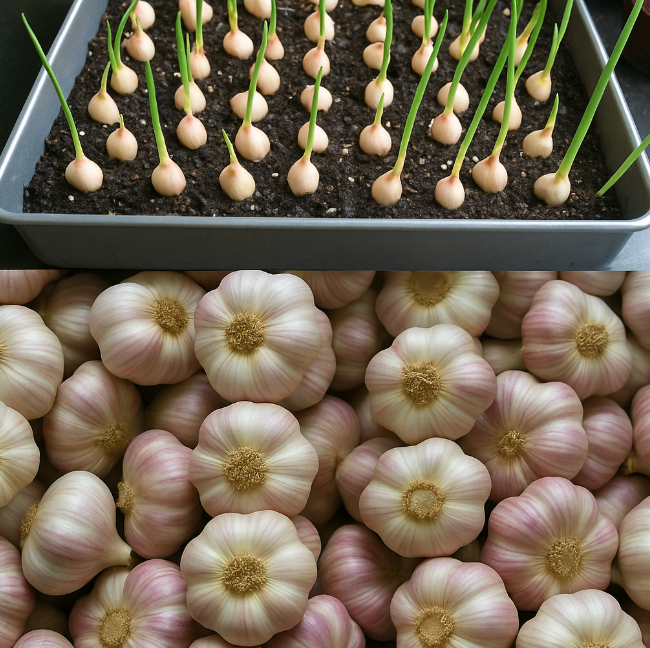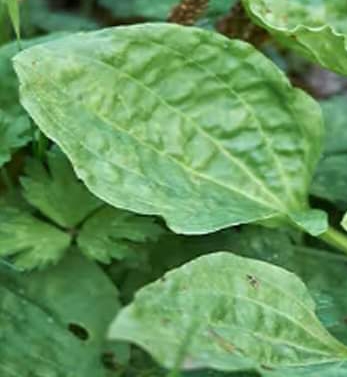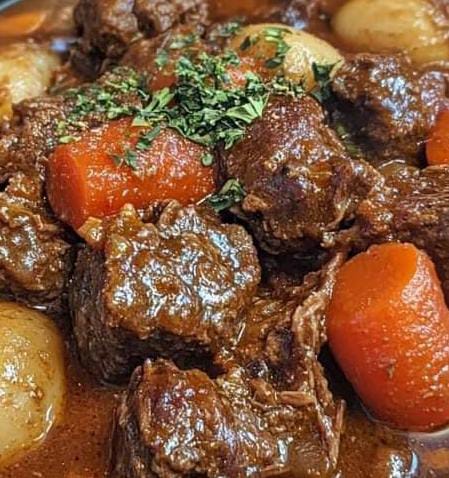How to Grow Garlic & Ginger at Home: The Ultimate 2,500+ Word Guide
Nothing beats the flavor punch of freshly harvested garlic and ginger from your own garden. Beyond culinary benefits, growing these two powerhouse ingredients supplies you with natural remedies, boosts your kitchen creativity, and reduces your grocery bill. In this comprehensive, step-by-step guide, we’ll cover everything from site selection and soil preparation to advanced planting techniques, pro-level care tips, troubleshooting case studies, companion planting strategies, storage methods, delicious recipes, and a thorough FAQ section—everything you need to cultivate a thriving garlic and ginger patch at home.
Table of Contents
- 1. Why Grow Garlic & Ginger?
- 2. Garlic Growing Guide
- 3. Ginger Growing Guide
- 4. Companion Planting & Garden Planning
- 5. Troubleshooting: Pests & Diseases
- 6. Delicious Recipes & Uses
- 7. Frequently Asked Questions
- 8. Conclusion & Next Steps
1. Why Grow Garlic & Ginger?
Garlic (Allium sativum) and ginger (Zingiber officinale) are more than kitchen staples—they’re natural health boosters. Cultivating them at home offers:
- Superior Flavor: Freshly harvested cloves and rhizomes pack more aroma and flavor than store-bought.
- Year-Round Supply: Fall-planted garlic stores through winter; ginger in containers ensures winter rhizomes.
- Health Benefits: Both contain antioxidants, anti-inflammatory compounds, and immune-supporting nutrients.
- Sustainability: Reduce packaging waste, control inputs, and save money over time.
2. Garlic Growing Guide
2.1 Selecting Garlic Cloves
Choose disease-free, organic seed garlic from:
- Hardneck Varieties: ‘Rocambole’, ‘Purple Stripe’—complex flavor and scape harvests.
- Softneck Varieties: ‘Silverskin’, ‘Artichoke’—long storage, braiding-friendly.
Pro Tip: Always separate cloves just before planting to minimize rot risk.
2.2 Planting Time & Climate
Garlic requires cold exposure for proper bulb formation:
- Fall Planting: 4–6 weeks before first frost—roots establish before winter.
- Spring Planting: In mild zones, plant early; expect smaller bulbs.
- Hardiness: Grows best in USDA zones 3–9; mulch heavily in colder regions.
2.3 Soil Preparation & Amendments
Optimal garlic soil is loose, fertile, and well-draining:
- pH 6.0–7.0: Test and adjust with lime or sulfur.
- Organic Matter: Mix 2–4 inches compost or aged manure per 100 sq ft.
- Fertilizer: Apply balanced NPK 5-10-10 at planting and nitrogen side-dress in spring.
2.4 Planting Your Cloves
- Layout rows 12 inches apart; plant cloves 2–3 inches deep, point up, spaced 4–6 inches.
- Label variety and date on stakes for record-keeping.
- Cover with mulch immediately to protect from frost and weeds.
2.5 Watering, Mulch & Fertilization
Maintain consistent moisture for bulb development:
- Water: 1 inch weekly; reduce when tops yellow.
- Mulch: 4–6 inches straw or shredded leaves for insulation and weed control.
- Side-Dress: Nitrogen source when shoots reach 6 inches.
2.6 Harvesting & Curing
Timing and technique maximize storage life:
- Harvest: When lower 2/3 leaves brown, typically early summer.
- Cure: Hang bulbs in shade with good airflow for 2–4 weeks until necks dry.
2.7 Storing Garlic
Store in cool (32–50°F), dark, dry locations:
- Braided or Mesh Bags: Ensure air circulation.
- Long-Term: Up to 9 months; break cloves only when needed.
For recipes and usage, visit: Garlic Recipes.
3. Ginger Growing Guide
3.1 Selecting Ginger Rhizomes
Pick firm, organic rhizomes with visible “eyes” at a garden center:
- Soak overnight to reduce dormancy.
- Divide into 1–2 inch pieces, each with at least one eye; allow cuts to callus 24h.
3.2 Planting Time & Climate
Ginger thrives in frost-free, humid conditions:
- Plant: Late winter to early spring, soil >65°F.
- Zones: Best in USDA 8–11; otherwise grow in containers moved indoors.
3.3 Soil & Container Preparation
Provide loose, moisture-retentive yet well-drained media:
- Mix equal parts potting soil, compost, and coco coir; add 10% perlite.
- Use wide, shallow pots (18–24″ Ø, 8–10″ deep) with drainage holes.
3.4 Planting Rhizomes
- Place pieces 3–4 inches apart, buds up, covered with 1–2 inches soil.
- Water lightly; maintain humidity with misting or humidity dome in dry climates.
3.5 Watering, Light & Fertilization
- Water: Even moisture, avoid waterlogging; mist foliage.
- Light: Bright, indirect sun; protect from hot afternoon rays.
- Feed: Liquid fertilizer or compost tea monthly during active growth.
3.6 Harvesting & Curing
Ginger is slow-growing; harvest timeline matters:
- Baby Ginger: After 4–6 months for tender, mild rhizomes.
- Mature Harvest: 8–10 months when foliage declines; dig carefully, shake off soil.
3.7 Storing Ginger
- Refrigerate: Unwashed rhizomes in perforated bag, 3–4 weeks.
- Freeze: Slice or grate, store in airtight containers 6 months.
- Dry: Dehydrate slices at 125°F for 6–8 hours; store in jars.
Explore recipes: Ginger Recipes.
4. Companion Planting & Garden Planning
Maximize space and health by pairing with beneficial companions:
- Garlic Companions: Roses (pest deterrent), brassicas (growth enhancer).
- Ginger Companions: Leafy greens (shade), legumes (nitrogen fixation).
- Rotation: Alternate garlic/ginger beds with legumes or cover crops every year.
5. Troubleshooting: Pests & Diseases
White Rot in Garlic
Symptoms: Yellowing foliage, bulb decay. Management: Remove infected bulbs; rotate out of alliums for 3–4 years.
Seedling Damping-Off
Symptoms: Collapsed seedlings. Prevention: Use clean soil, sprinkle baking soda before sowing, ensure good airflow.
Ginger Rhizome Rot
Symptoms: Soft, mushy rhizomes; foul odor. Prevention: Ensure well-drained soil, avoid overwatering, treat seed pieces with hot water dip.
6. Delicious Recipes & Uses
- Roasted Garlic Butter—spreadable perfection for bread and veggies.
- Ginger-Garlic Stir-Fry—a quick, flavor-packed meal.
- Garlic & Herb Infused Oil—perfect for dressings and marinades.
- Ginger-Lemon Cordial—refreshing homemade beverage.
7. Frequently Asked Questions
Q1: Can garlic and ginger be grown together?
A: Yes—garlic in fall, ginger in spring; stagger planting times and ensure proper spacing.
Q2: How do I prevent garlic bulbs from splitting?
A: Maintain even moisture; harvest when leaves begin to yellow, before overmaturity.
Q3: What temperature do ginger rhizomes prefer?
A: 75–85°F; protect from temperatures below 50°F.
Q4: Can I replant garlic cloves from my harvest?
A: Absolutely—select large, healthy bulbs; store properly before replanting each fall.
Q5: How do I know when garlic is ready?
A: When 2/3 of foliage has turned brown; dig gently and cure promptly.
Conclusion & Next Steps
Growing garlic and ginger at home combines satisfying harvests, culinary delights, and health benefits. Follow these expert strategies—site selection, proper planting, attentive care, troubleshooting, and creative uses—to achieve thriving, productive crops. Keep a garden journal to track performance, adapt techniques to your unique conditions, and share your successes at CanadianEdShop. Here’s to a bountiful garlic and ginger season!






